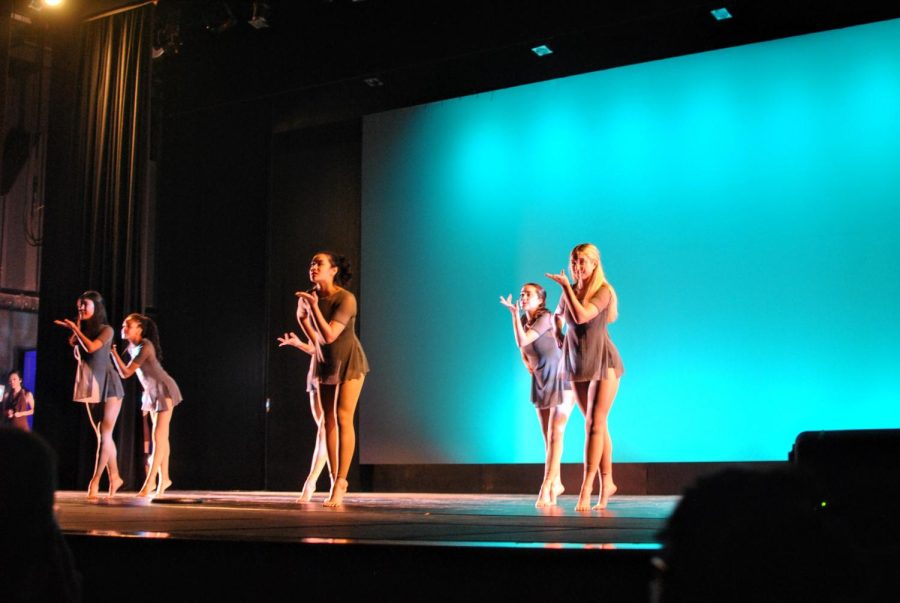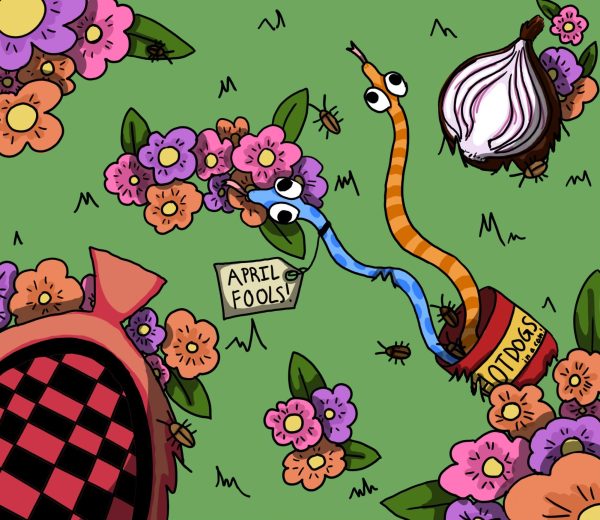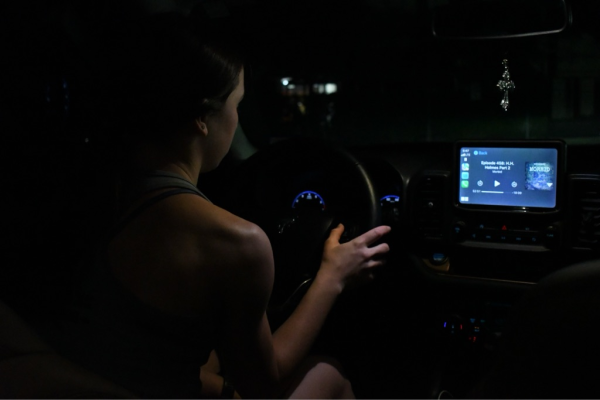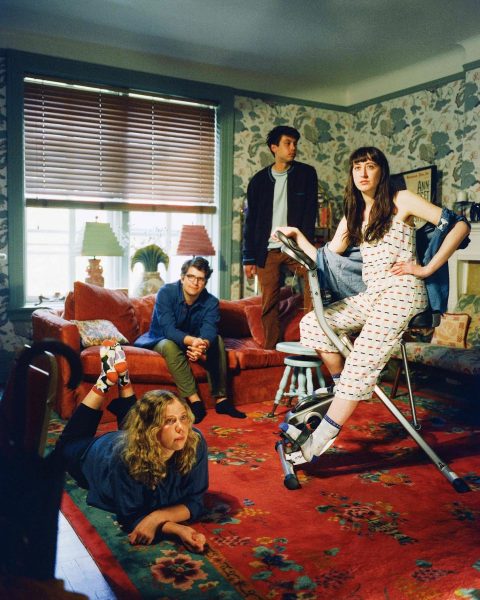Student Choreography Showcase returns to in-person format, features original dances
On Jan. 7, students and parents gathered to watch the annual Student Choreography Showcase. Over the past year, dance students took improv classes and rehearsed for weeks to prepare for the almost entirely student-driven production.
Every year, the process begins in September with a choreography workshop run by Dorrell Martin, dance teacher and STUCHO director. Dancers sign up for the workshop at the beginning of the school year, giving them the entire first semester to brainstorm themes and work out choreography.
“We do imagery movement, where I will give them a picture and they have to analyze that picture and come up with movement that relates to that picture,” Martin said.
After students have developed a rough outline of their piece, experts called adjudicators, who are not associated with the school, come in to review proposed choreography and offer constructive criticism on the pieces. They make suggestions including where the dancers should be placed on the stage, when the dancers should be in unison and when to vary the choreography.
After the adjudication, choreographers further polish and curate the message of their dances.
“This year, these groups of dancers all had such a different approach to their choreography,” Martin said. “The show had such a variety this year, and I think some of the choreographers really dug deep as far as meaning.”
“Grief,” choreographed by junior Sue Lyn Roberts, was the emotional finale of the showcase. Roberts is in the highest level dance class offered at SJS, Terpsichore, and has been dancing since before elementary school. She took STUCHO as an opportunity to hone her storytelling within choreography. Like the other choreographers, Roberts began the creative process at the workshop during the start of the school year.
“A lot of it was just listening to music for an hour or an hour and a half and just thinking about what I wanted the dance to look like, the formations, the movement, and what kind of emotions I wanted to evoke,” Roberts said.
While she listened to “Je Te Laisserai Des Mots” by Patrick Watson, Roberts conjured the base emotions behind her dance, which ultimately developed into an artistic telling of the five stages of grief—denial, anger, bargaining, depression and acceptance—through her choreography. She says that although grief is traditionally considered synonymous with sadness, it is actually a more complex process.
“I think that one of the most underappreciated stages of grief is acceptance, so I wanted to highlight that in my dance,” Roberts said.
Roberts hoped to convey a message to those watching—better things will come out of hardship or adversity, which is why portraying acceptance was such a crucial part of the piece to her.
The lighting design in the showcase was also put together by students. Since October, lighting designers and choreographers had discussed methods to highlight the dancers’ movement and enhance the emotion of the production. Junior Lydia Gafford was the lighting designer for “Grief.”
Only days before the showcase, Roberts’ dance experienced a major setback. One of her dancers was exposed to COVID the week before the performance, so Roberts had to improvise a solution.
“Luckily I was able to be in my own dance which normally isn’t allowed,” Roberts said. “Due to the circumstances, Mr. Martin made an exception, and I’m so grateful he did.”
Unlike in last year’s videotaped productions, viewers were able to gather in the VST to watch this year’s showcase. COVID safety protocols allowed for a safe in-person performance. Dancers wore their masks at all times unless on stage, and audience members were masked as well. From their first rehearsal to waiting backstage in the green room, dancers took the necessary precautions to perform live.
“All of the dancers take this very seriously,” Martin said. “They really put a lot of effort into their work and what they are trying to get across to the audience.”
Mia Hirshfeld ('24) joined The Review in 2021 as a sophomore. Her favorite movie is Knives Out and she enjoys Just Dance on her Wii that has been going...

James Li ('23) joined The Review in 2020 as a sophomore. He enjoys biking around Houston and is known for having too many window stickers on his car.

Isabella Diaz-Mira ('23) joined The Review in 2021 as a junior. She speaks Spanish fluently and likes writing poetry in her free time.

Lucy Walker ('25) joined The Review in 2021 as a freshman. She enjoys discovering new bands and collecting stickers.

Diane Guo ('23) joined The Review in 2019 as a freshman. She likes drawing flowy hair, drinking Yakult Lite and trying minimalist graphic liner styles.

Aleena Gilani ('25) joined The Review in 2021 as a freshman. She is a big fan of Tootsie Rolls and the show Community.

Virginia Carolyn Crawford ('24) joined The Review in 2021 as a sophomore. She is an avid ABBA fan. She adores any movie with Julie Andrews or Meryl Streep.



















